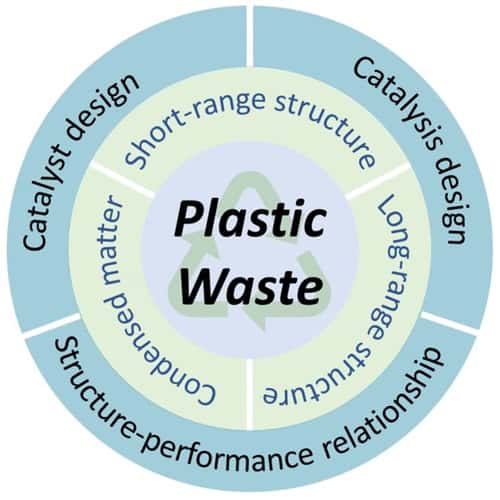Catalytic Techniques Plastic Waste 01-03-2023 - Arhive
Catalytic Techniques Plastic Waste
-Catalytic Techniques for Upcycling Plastic Waste
Current plastic recycling is limited, typically involving mechanical processes that often result in “downcycled” products with inferior properties relative to plastics in their unprocessed, virgin forms. Furthermore, the plastics that do end up recycled comprise less than 20% of the total plastic produced to date—most of our plastic waste ends up in a landfill or dumped in the natural environment, leading to ever-increasing pollution and a persistent and disruptive impact on ecosystems.
Given the urgent need to improve upon existing plastic recycling methods, more researchers are turning toward chemical routes for plastic reclamation.1 Closed-loop chemical recycling depolymerizes plastics into their constituent monomers or oligomers, which can be used to resynthesize the same plastics with virgin-like material properties. However, this is commercially unattractive when virgin monomers from fossil resources are so cheap. Catalytic Techniques Plastic Waste
Alternatively, open-loop or “upcycling” approaches leveraging catalytic techniques may have more potential for success, with end-of-life plastics positioned as untapped feedstock that can be turned into higher-value products. Polymers such as polyethylene, polypropylene, and polystyrene account for more than 60% of plastic waste, and their controlled deconstruction is particularly challenging due to their inertness and the stability of the non-polar bonds in the polymer backbone.2 Therefore, it will be necessary to incorporate diversified catalytic processes alongside state-of-the-art technologies from other fields in order to successfully derive valuable polymers and functional materials from waste plastics.3 Catalytic Techniques Plastic Waste
Other researchers are taking a deeper look into electro-reformation strategies to convert polymer waste and CO2 into value-added chemicals and fuels. One recent study published in ACS Catalysis reports on an electrocatalytic integrating strategy for efficient valorization of PET plastic and CO2 to simultaneously produce formic acid at both anode and cathode. This use of the cathodic reduction reaction could represent an energy-efficient and economically viable upcycling approach.4
Ultimately, the potential annual energy savings that could be achieved from recycling all global waste plastic is equivalent to 3.5 billion barrels of oil, or $176 billion.3 Innovative catalytic technologies and processes like this will be key tools in the battle to achieve the required levels of plastic waste reclamation, as well as the design and manufacture of novel catalytic materials. Catalytic Techniques Plastic Waste
Emerging electro-, photo-, and biocatalytic approaches are anticipated to offer sustainable plastic conversion under mild conditions and with lower carbon emissions—which will help to grow the portfolio of available plastic-derived, high-value products.1 But as it stands now, many questions surrounding the economic and environmental feasibility of proposed catalytic solutions still need answering, and more research and cradle-to-grave assessment of plastic recycling and upcycling processes remains critical.

